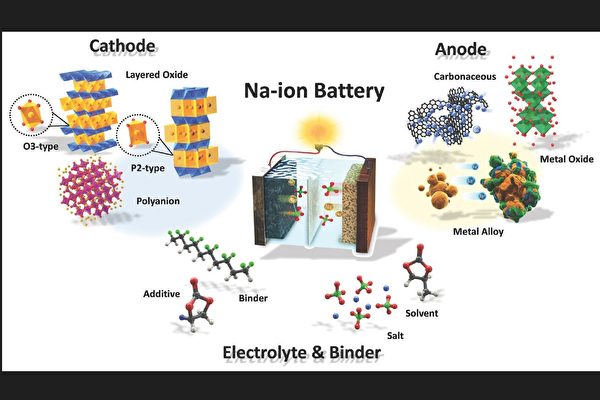In pursuit of more powerful and stable batteries, it has become one of the main goals of modern technological development. Current batteries have drawbacks such as flammability, insufficient energy density, narrow operating temperature range, and manufacturing difficulties. Osaka Metropolitan University in Japan has developed a new process that is expected to enhance the production and practicality of all-solid-state sodium batteries, and may even replace some lithium batteries.
Currently, lithium metal on the Earth’s surface is much scarcer than sodium metal, making the production cost of sodium batteries much cheaper than lithium batteries. Therefore, stable all-solid-state sodium batteries have attracted people’s attention.
However, both sodium and lithium solid-state batteries have their own issues. Solid-state lithium batteries can react with moisture in the air to produce toxic hydrogen sulfide (H2S). On the other hand, the electrolyte used in solid-state sodium batteries is prone to obstacles during synthesis due to poor stability of the starting materials and products towards solvents.
Additionally, the sulfides contained in the starting materials for solid-state sodium batteries can generate toxic sulfur vapor at high temperatures during synthesis, requiring reactions to take place in a vacuum and sealed conditions. This significantly limits the experimental and manufacturing conditions, prompting the need to find solutions to overcome these constraints.
A research team led by Associate Professor Atsushi Sakuda and Professor Akitoshi Hayashi at Osaka Metropolitan University has developed a scalable synthesis process for sodium sulfide-containing materials, significantly increasing the ionic conductivity of sodium ion electrolytes and manufacturing efficiency. The results of this research were published in the journal “Energy Storage Materials” in March of this year.
The large-scale synthesis of highly conductive and moldable electrolytes is crucial for the practical application of all-solid-state sodium batteries. The electrolyte synthesized by the team, consisting mainly of sodium (Na), antimony (Sb), tungsten (W), sulfur (S), high ionic conductivity phase and electrode-protecting layer sodium borosulfide (Na3BS3) glass, exhibited approximately 10 times higher conductivity than required.
They used anhydrous sodium sulfide (Na2S) and sulfur (S) as materials and fusion-promoting flux to form sodium tetrasulfide (Na2S4) with a melting point of 275°C, while the remaining sodium reacted with sodium tetrasulfide to form sodium disulfide (Na2S2) with a melting point of 470°C. These products have lower melting points than anhydrous sodium sulfide with a melting point of 1180°C but higher than sulfur with a melting point of 116°C.
This process eliminates the need for a closed, oxygen-free environment for the production of solid sulfide electrolytes. By shifting the melting point of polysulfide to between sodium sulfide and sulfur, acting as a flux to increase the reactants, the method addresses material instability and evaporation issues, facilitating the rapid synthesis of electrolytes for all-solid-state sodium batteries.
Furthermore, the researchers conducted tests on the charge-discharge performance, rate capability, and cycle performance of solid-state sodium batteries with the new electrolyte composed of sodium, antimony, tungsten, and sulfur glass. After 300 normal charge-discharge cycles, the battery still maintained a capacity of 130mAh/g, corresponding to 76% of its initial capacity, with a coulombic efficiency of 100%.
Moreover, this battery with the new electrolyte can operate normally between 25°C temperature and 1.2V to 2.4V, with a current density range of 0.13 to 1.02mA/cm². The conductivity of the electrolyte with multi-metal components is 125mS/cm, which is significantly higher than that of conventional electrolytes.
Associate Professor Sakuda stated to the university’s newsroom, “This newly developed process can almost produce all sodium sulfide-containing materials, including solid electrolytes and electrode active materials. Additionally, compared to traditional methods, this new process makes it easier to obtain those high-performance materials, so we believe it will become the mainstream process for future development of materials for all-solid-state sodium batteries.”

